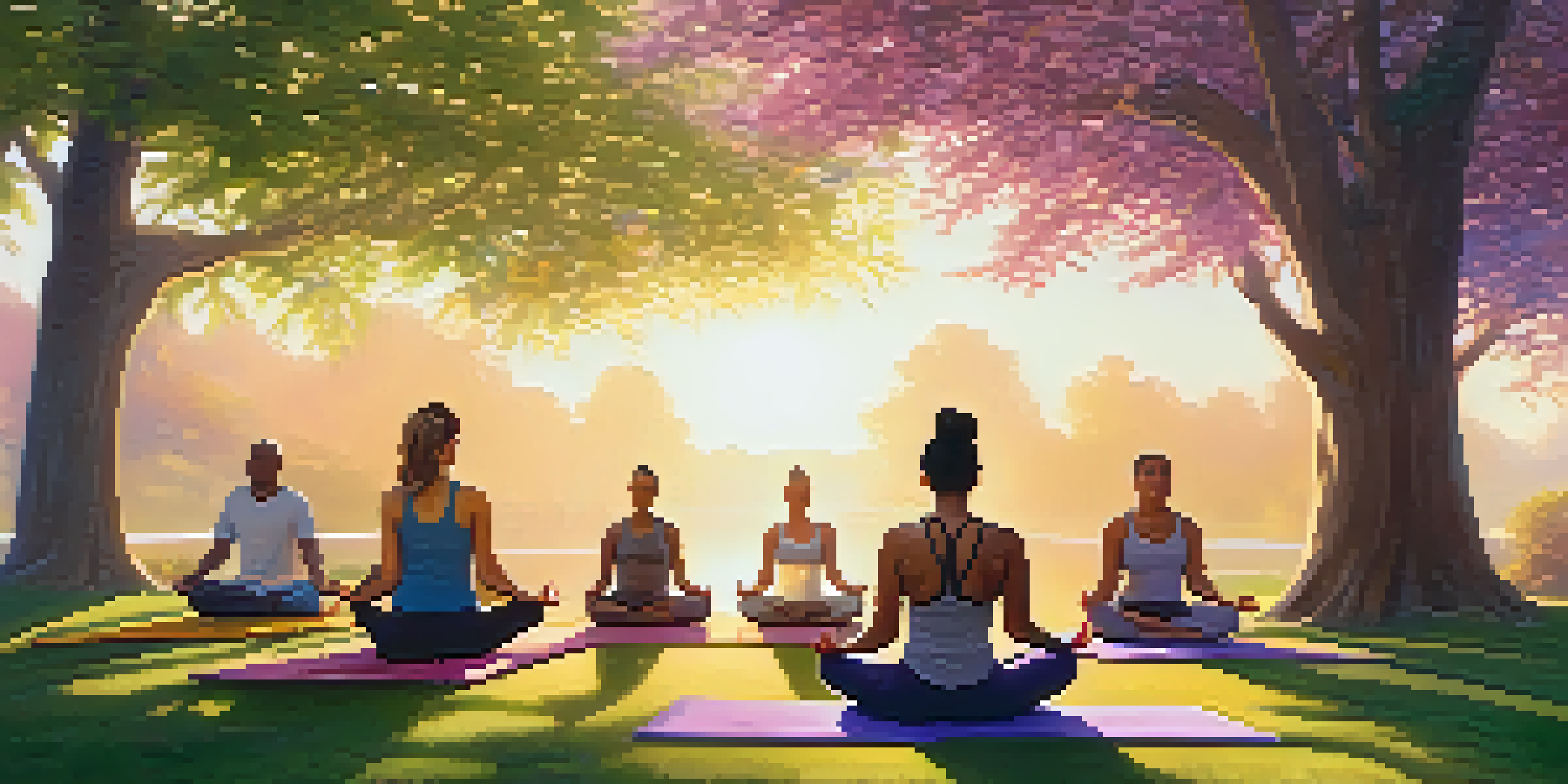Transformative Power of Yoga for Self-Discovery

Understanding Yoga: More Than Just Physical Exercise
Yoga is often seen as a physical practice, but its essence goes much deeper. It's a holistic approach that integrates body, mind, and spirit into a unified experience. This multidimensional nature is what makes yoga a powerful tool for self-discovery.
Yoga is the journey of the self, through the self, to the self.
When we step onto the mat, we engage not just our muscles, but also our thoughts and emotions. The poses, or asanas, encourage us to listen to our bodies and reflect on our inner selves. This creates a safe space for exploration and understanding.
As we practice, we may uncover hidden fears, desires, and strengths. Each session becomes a journey inward, allowing us to observe our thoughts and feelings without judgment. This self-awareness is a crucial first step toward transformation.
Breath: The Bridge Between Body and Mind
Breath is a fundamental aspect of yoga, often referred to as 'pranayama.' This practice involves controlling the breath to enhance physical and mental well-being. By focusing on our breath, we can cultivate a deeper connection between our body and mind.

When we consciously breathe, we anchor ourselves in the present moment. This mindfulness helps us detach from distractions and anxieties, making space for introspection. The act of breathing becomes a meditative practice that guides us toward self-awareness.
Yoga: A Holistic Journey
Yoga integrates body, mind, and spirit, offering a profound path for self-discovery.
Through breathwork, we can also release emotional blockages and tension. This release paves the way for clarity and insight, allowing us to better understand our true selves and our place in the world.
Mindfulness: Cultivating Presence and Awareness
Yoga encourages mindfulness, which is the practice of being fully present in the moment. This awareness allows us to observe our thoughts and feelings without getting lost in them. It’s like watching clouds float by—we acknowledge them but don’t let them define us.
The breath is the bridge which connects life to consciousness, which unites your body to your thoughts.
In a world filled with distractions, this practice of mindfulness can be transformative. It helps us recognize patterns in our behavior, leading to greater self-knowledge. By understanding ourselves better, we can make more conscious choices in our lives.
Over time, this heightened awareness fosters a sense of peace and acceptance. As we embrace our true selves, we become more compassionate towards ourselves and others, paving the way for deeper connections and personal growth.
Emotional Release: Letting Go Through Practice
One of the most profound benefits of yoga is its ability to facilitate emotional release. As we move through different poses, we may encounter pent-up emotions that we didn’t even know we were holding onto. This can lead to moments of catharsis during practice.
For many, yoga provides a safe outlet for expressing emotions that often go unacknowledged. Whether it’s joy, sadness, or frustration, allowing ourselves to feel these emotions can be liberating. Each tear shed on the mat is a step toward healing and self-discovery.
Mindfulness Enhances Self-Awareness
Practicing mindfulness in yoga allows us to observe our thoughts and emotions without being overwhelmed by them.
By embracing emotional release, we learn to navigate life’s ups and downs with greater resilience. This newfound strength helps us understand our emotional responses, leading to healthier relationships with ourselves and others.
Setting Intentions: A Pathway to Self-Discovery
Setting intentions is a powerful practice in yoga that can significantly enhance our journey of self-discovery. An intention is a guiding principle that focuses our energy and attention during practice. It’s like planting a seed for the growth we wish to cultivate.
When we take the time to reflect on what we want to achieve, we create a roadmap for our practice and our lives. Intentions can be simple, like cultivating patience, or deeper, such as seeking forgiveness. This clarity helps us align our actions with our values.
As we consistently return to our intentions, we begin to see shifts in our perspective and behavior. This ongoing process of self-reflection leads to profound insights about ourselves, propelling us toward personal transformation.
Community: The Power of Shared Experiences
Yoga is often practiced in a community setting, which can profoundly impact our self-discovery journey. Sharing space with others allows us to connect and learn from different perspectives. This sense of belonging can be incredibly validating.
In group classes, we witness others' struggles and triumphs, reminding us that we are not alone in our journeys. This shared experience fosters empathy and encourages us to be more open with ourselves. It’s a reminder that vulnerability is a strength.
Community Supports Personal Growth
Engaging in yoga within a community fosters connection and empathy, enriching our journey of self-discovery.
Moreover, community support can motivate us to delve deeper into our practices. Whether through workshops, retreats, or regular classes, these connections can lead to lasting friendships and a more profound understanding of ourselves.
Integrating Yoga into Daily Life for Lasting Change
To truly harness the transformative power of yoga, it’s essential to integrate its principles into daily life. This means carrying the lessons learned on the mat into our everyday interactions and decision-making. It’s about living yoga, not just practicing it.
Simple practices like mindful breathing or setting daily intentions can create a ripple effect in our lives. These small changes encourage us to respond to challenges with awareness and compassion. Over time, they foster a deeper connection to ourselves and our surroundings.

By making yoga a part of our daily routine, we cultivate continuous self-discovery and growth. This commitment leads to lasting change, helping us navigate life’s complexities with grace and understanding.